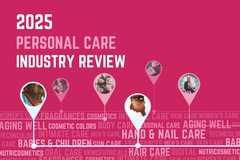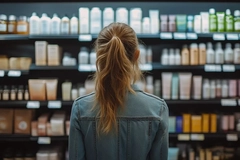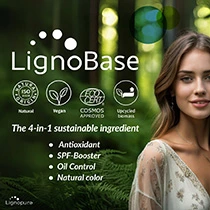E.L.F. Beauty stock swings after tariff-tainted Q1 results and Rhode acquisition
E.L.F. Beauty has reported a 9% increase in net sales for the first quarter of fiscal 2026. The announcement follows the company’s US$1 billion acquisition of Hailey Bieber’s beauty brand Rhode, which closed earlier this week. Shares initially surged 12% after the acquisition news, but later dropped 11.8% as investors reacted to falling profit margins and ongoing cost pressures revealed in the Q1 report.
Between April and June 2025, E.L.F. recorded net sales of US$353.7 million, up from US$324.5 million in the same period last year.
Adjusted earnings per share were US$0.89, beating Wall Street’s estimate of US$0.84. The company also reported adjusted EBITDA of US$87.1 million, a 12% increase year-over-year.
“Our strong Q1 results, including 210 basis points of market share gains, are a continuation of the consistent, category-leading growth we’ve delivered over the past 26 quarters,” the company’s Chairman and CEO, Tarang Amin, says.
However, the company’s gross margin fell to 69%, down 2.15 percentage points from the prior year. The decrease was attributed primarily to higher import tariffs, a cost the company says was only partially offset by favorable exchange rates and product mix improvements.
Tariffs take a bite
E.L.F.’s results show that while sales remain strong, profitability is under pressure. The company has not issued full-year financial guidance for fiscal 2026, citing ongoing uncertainty around US trade policy.
Adjusted EBITDA margins for the first half of the year are expected to fall to approximately 20%, down from 23% in the same period last year. The decline is attributed primarily to increased tariff costs.
This quarter, tariffs weighed heavily on performance, with profits down 30% year-over-year to US$33.3 million, compared to US$47.6 million in the first quarter of fiscal 2025. According to CFO Mandy Fields, the drop reflects the impact of elevated import duties on Chinese-made goods.
Between April 9 and May 13, E.L.F. faced steep import tariffs of 170% on goods from China. The rate has since been reduced to 55%, which includes a 30% surcharge added to the existing 25% base tariff. This lower rate will remain in effect until August 12.
Although the company has reduced its China production share from nearly 100% in 2019 to “a little less than 75%” today, the majority of its goods remain exposed to these elevated trade penalties.
E.L.F. implemented a US$1 price increase across all its brands to manage cost pressures. At the same time, the company has continued investing in marketing, visual merchandising, and digital platforms, all of which contributed to higher operating expenses.
Selling, general, and administrative (SG&A) costs rose to US$195.8 million, or 55% of net sales. On an adjusted basis, SG&A totaled US$177.3 million, representing 50% of sales.
.jpg) E.L.F. reported 9% net sales growth for Q1 fiscal 2026. (Image Credit: e.l.f. beauty)The increase was primarily driven by marketing, fixturing, and technology costs, along with higher depreciation and amortization, partially offset by lower compensation and operations expenses.
E.L.F. reported 9% net sales growth for Q1 fiscal 2026. (Image Credit: e.l.f. beauty)The increase was primarily driven by marketing, fixturing, and technology costs, along with higher depreciation and amortization, partially offset by lower compensation and operations expenses.
Rising operating costs and trade penalties combined to lower generally accepted accounting principles net income to US$33.3 million, from US$47.6 million the year before.
The year-over-year decline also reflects a US$17.8 million income tax provision, compared to a small tax benefit recorded in the same quarter of 2024.
Rhode raises financial stakes
One of the biggest announcements accompanying the earnings report was E.L.F. Beauty’s acquisition of Rhode, a skin care brand founded by Hailey Bieber, for US$800 million.
The deal officially closed on August 5 and includes US$600 million in cash and US$200 million in stock, with the potential for an additional US$200 million earnout based on Rhode’s performance over the next three years.
E.L.F. entered into a new US$600 million term loan agreement to finance the acquisition. As of June 30, before the deal’s close, the company reported US$170 million in cash and US$256.7 million in long-term debt.
These figures are expected to increase once the Rhode acquisition is reflected in future financial reports.
“We’re pleased with what we’re seeing out of Rhode,” CFO Mandy Fields says. “They had their Lemontini lip peptide launch, which went really well for them. We’re so excited about all the signals that we’re seeing on the Rhode side.”
.jpg) E.L.F. shares rose after the Rhode deal but dipped post-earnings release.Unlike E.L.F.’s own high-frequency launch strategy, Rhode is expected to maintain its more minimalist approach.
E.L.F. shares rose after the Rhode deal but dipped post-earnings release.Unlike E.L.F.’s own high-frequency launch strategy, Rhode is expected to maintain its more minimalist approach.
“It’s incredibly thoughtful, it has a beautiful aesthetic, and you’re seeing that in terms of the response from consumers and just how much they can’t get enough of Rhode,” adds Amin.
“There will be additional launches as we go forward, but we’ll continue to make sure that it matches that focus on the brand.”
Cash grows but forecast stalls
E.L.F. reports its operating cash flow improved to US$27.2 million, up from US$1.3 million in the first quarter of the previous fiscal year.
Inventory levels were reduced to US$170.4 million, down from US$199.6 million a year earlier, while accounts receivable rose sharply to US$173.4 million.
Despite this, the company again declined to provide a full-year forecast. E.L.F. cites “the wide range of potential outcomes related to tariffs” as the reason for withholding guidance.
While the company continues to post strong sales gains and outperform earnings expectations, rising input costs, increased debt, and external trade pressures are now limiting its profitability outlook.
As it integrates Rhode and navigates a shifting economic landscape, investor focus will likely remain on how effectively E.L.F. can sustain its growth while defending its margins.













